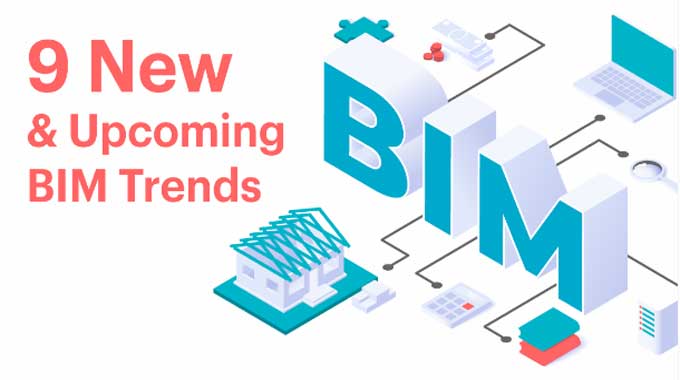Top 5 latest BIM trends in the Construction Industry for 2022
Tweet
AEC software and BIM software adopted by architects, engineers, and contractors (AEC) had a great year in 2021. Nevertheless, BIM trends in construction are constantly evolving due to technology's ever-evolving nature.
Over the past decade, BIM software has seen a significant rise in use, with 73% of construction companies reporting that they are aware of and using it within their own organization. In 2011, a mere 11% of companies used BIM.
As the global population grows to 9.8 billion people by 2050, the adoption of BIM software can enable construction processes to be executed more efficiently while capturing important data to meet the housing needs.
Rise of BIM Implementation
Construction industry practitioners use Building Information Modeling to manage a project's lifecycle from concept to completion. Building Information Modeling is a method of managing the digital aspects of a construction project. All projects over ?100 million have been required to use BIM since 2017.
By implementing digital software, construction times can be sped up, cost management can be improved, and building safety is ensured, among other benefits. However, it wasn't until the 2000s that BIM began to be implemented. While different countries use different levels of BIM, ISO 19650 is generally known as the international standard for managing information about built assets over their lifetime - using BIM.
No need for Drawing
Improved digital collaboration could lead to more effective use of the models on site. Building processes should be adjusted to digital delivery instead of drawings.
It begins with the Building Owner who wants to improve the quality of his building by requiring a digital twin. As better models are delivered, builders might decide to build based on those models. The digital building is aligned with the physical one, enhancing the effectiveness and quality of work.
As far as the General Contractor is concerned, there are two sides to the story. In order to maximize efficiency and save time, he might decide to use BIM technology on site to its full potential.
As an example, this could mean using tablets on-site, creating digital checklists in the models or even prefabricating off-site from the model. It always amazes me what contractors are able to take from models.
With more and better software solutions now, I believe this will be a trend in BIM for 2022. Other projects have already laid down the path, so others can learn from them.
Digital Twin
A buzzword that emerged in 2020 was digital twins. There was a feeling that everyone wanted to create one or have one. It was something I reluctantly considered, expecting it to be another term coined by creative marketers. This term may refer to something greater after seeing it in a few contracts with explanations of what Building Owners understand as his Digital Twin.
Building Owners are demanding an actual as-built model equivalent to the building, along with all inter-connected data and operational documents, as Digital Twins gain popularity and lose their buzz. Additionally, the management of Digital Twins & the advancement of FM software is one of the BIM trends in 2022.
Automation
Model quality is generally leveraged in the branch. You must work faster and better to deliver better quality since the tools are the same. Due to low margins on projects, many companies try to automate their workflows to gain competitive advantages.
An automation system involves using digital processes, applications, and robots to do tasks with little or no human intervention.
This has already been demonstrated with current BIM trends and technological advancements, even outside of the construction industry. A silver lining of the pandemic is that machines are replacing humans on job sites as a result of the pandemic.
Construction automation does not only save money, but also reduces health and safety hazards. As companies use more robotics and digital processes to make workplaces safer, construction is no longer associated with danger.
To get online demonstration, watch the following video tutorial.
Video Source: Geospatial World
Construction Connection
In construction, this term seems to be very popular. This refers to enhancing digital collaboration.
It is rare for designers to be on site, and the same is true for building owners. Construction managers may rotate staff to avoid work downtime, so that a maximum of half at one time.
It creates a need for better digital collaboration, which I believe will be a big BIM Trend this coming year. You are taking part in design meetings, approving documents, negotiating contracts, and inspecting the site. The whole process will take place in the cloud. It will be necessary for cloud technology to be more powerful, more user-friendly, and more effective.
Artificial Intelligence
An artificial intelligence system is a computer program that can perform tasks that are similar to those performed by humans. A lot of people associate the term with how computers can perform tasks using cognitive processes similar to those of humans. By using the human ability to reason, learn and discover, the computer can complete digital processes.
Artificial intelligence is a particularly useful tool in construction, which relies heavily on human ability. AI streamlines construction processes by reducing cost, time, and risk of the project lifecycle by exploring all available avenues and methods.

Gallery
Feel free to contact us for BIM requirements. One of our representative will respond you within 24 Hours. Send us your projects requirement today and grow your project.
Explore More !







